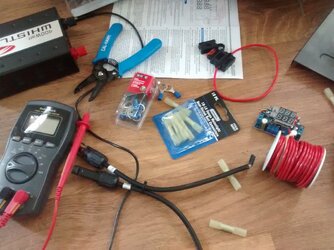The wire does have a maximum capacity; however, for what you are doing, I think you will put in the sizes recommended by specification or by maths.
Since you are DC all the way, life is good. If you have volts and power, the equation is
Current = Power / Voltage
I would use 12V for your voltage even from the panel. If you find that the panel fuse is blowing often on really sunny days, I would go up to the next size fuse.
If you are lucky you might have an "IV" curve for the panel which will tell you what it's maximum current is across all voltages. I would make the fuse at that point for the panel since your charge controller can do some black magic to charge your batteries at partial panel power.
I would fuse your charge controller at whatever it is rated for plus a little bit. So a 10A charge controller probably should have a 15A fuse between it and the batteries.
Hopefully, everything you are buying will have recommended fuses in either the specification sheets or installation manuals.
For reference, here are some wire sizes and their maximum current recommendations:
18 AWG = 14 AMPS
16 AWG = 18 AMPS
14 AWG = 25 AMPS
12 AWG = 30 AMPS
I have seen cars from the factory with higher fusing than what is above, but they are going for cheap, not for what's right. The problem you run into is heat, smaller wire with higher current means more heat.




